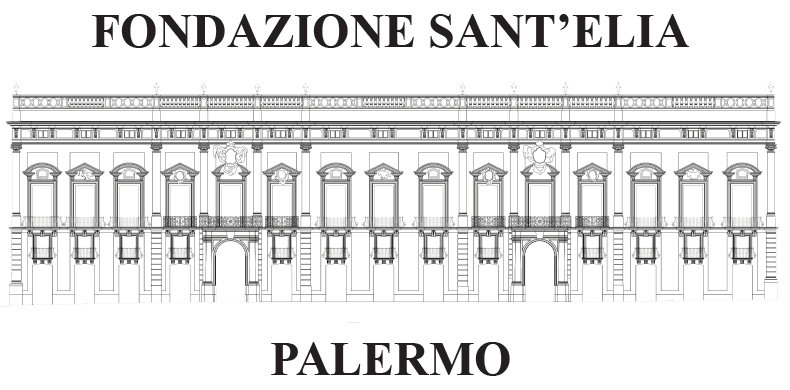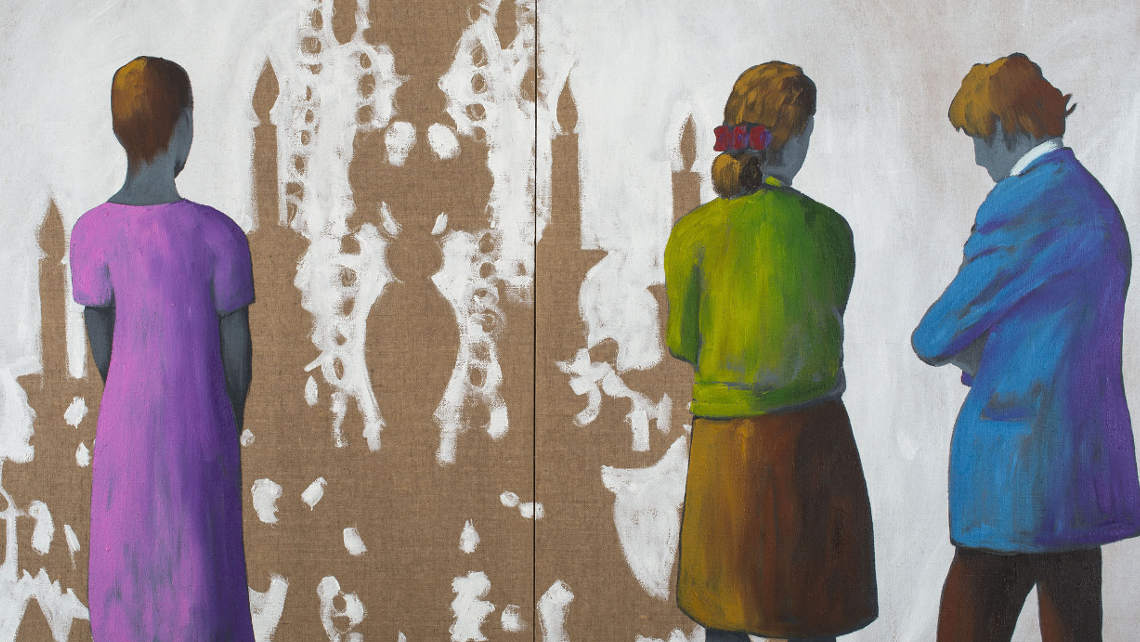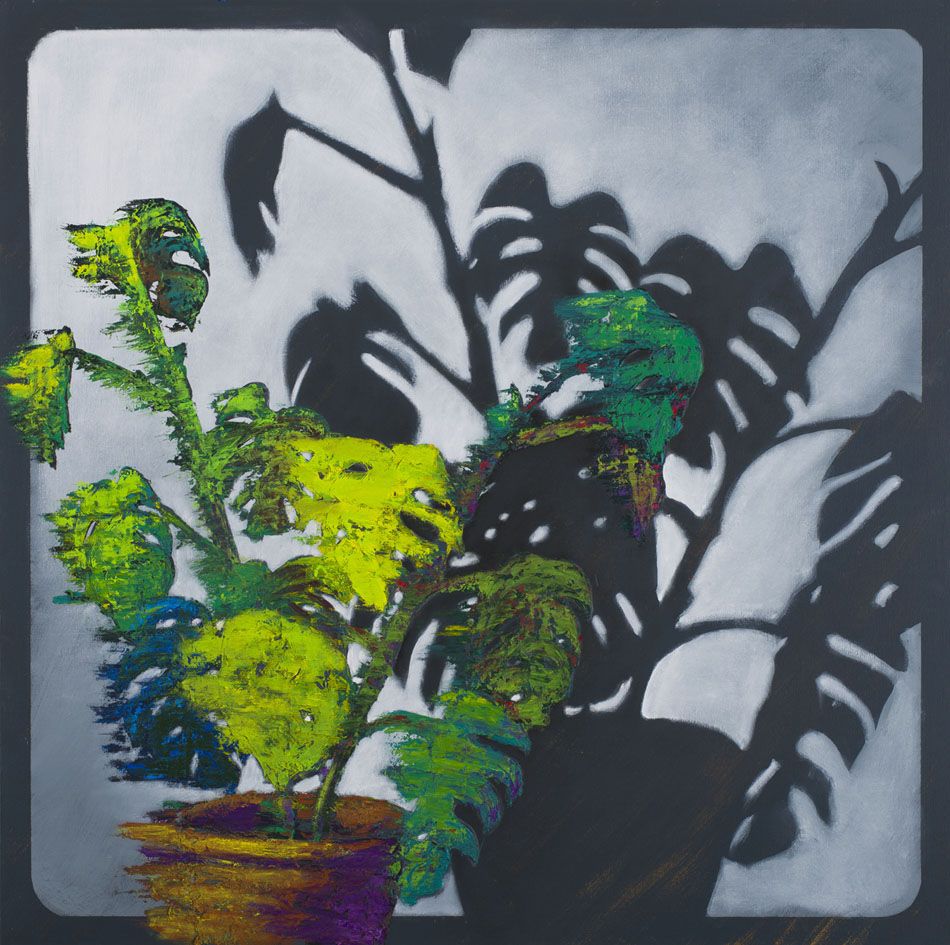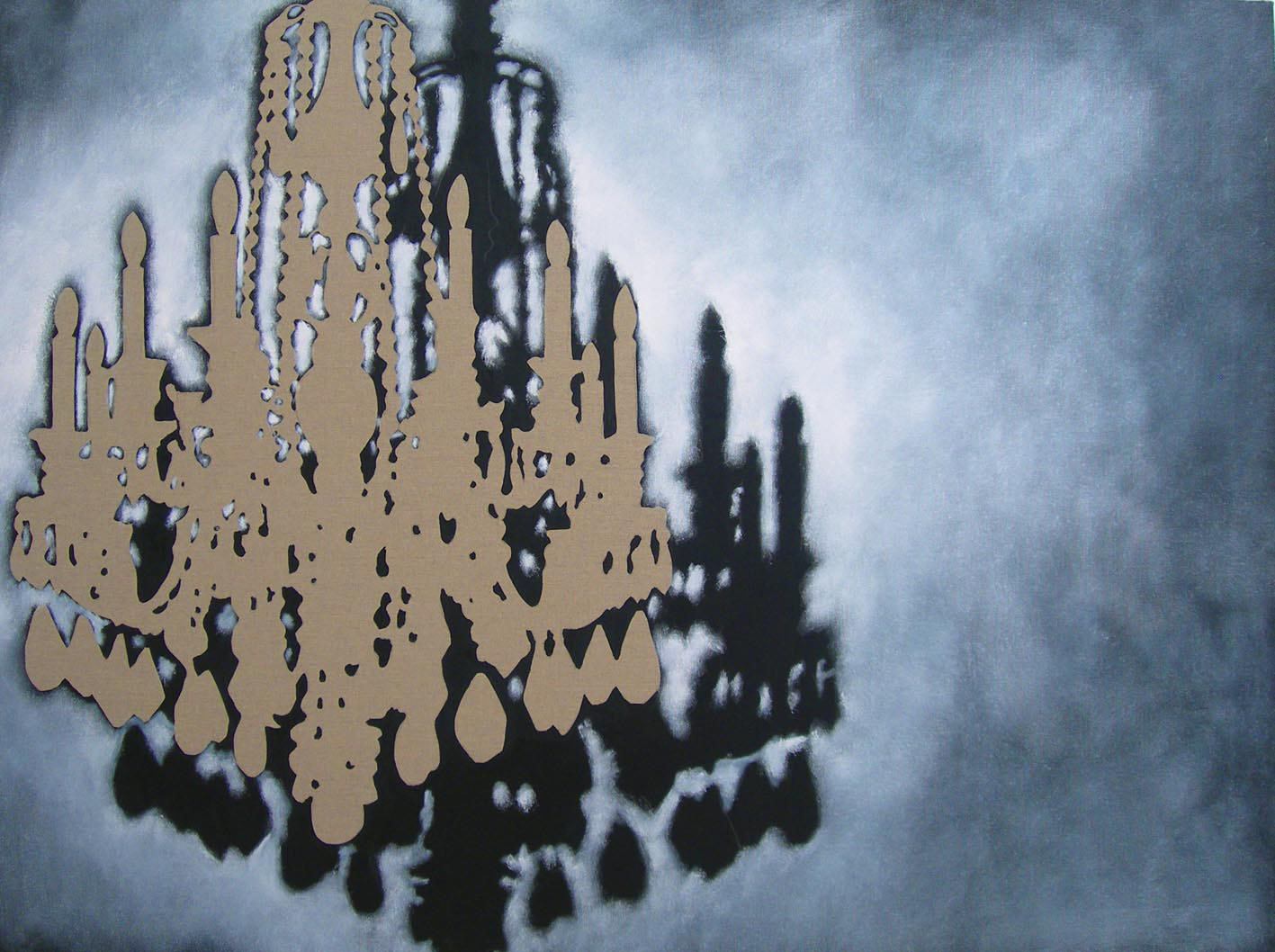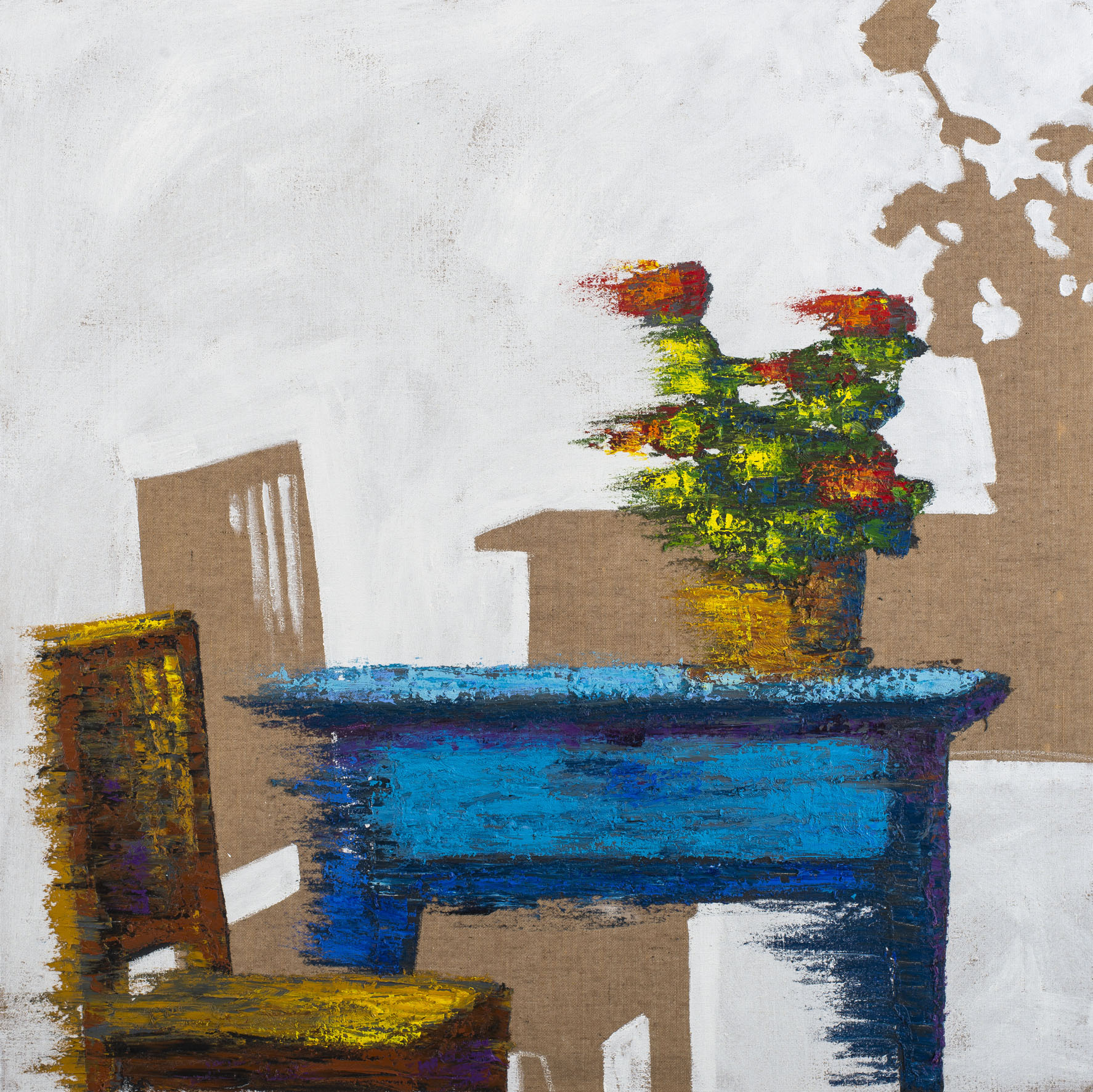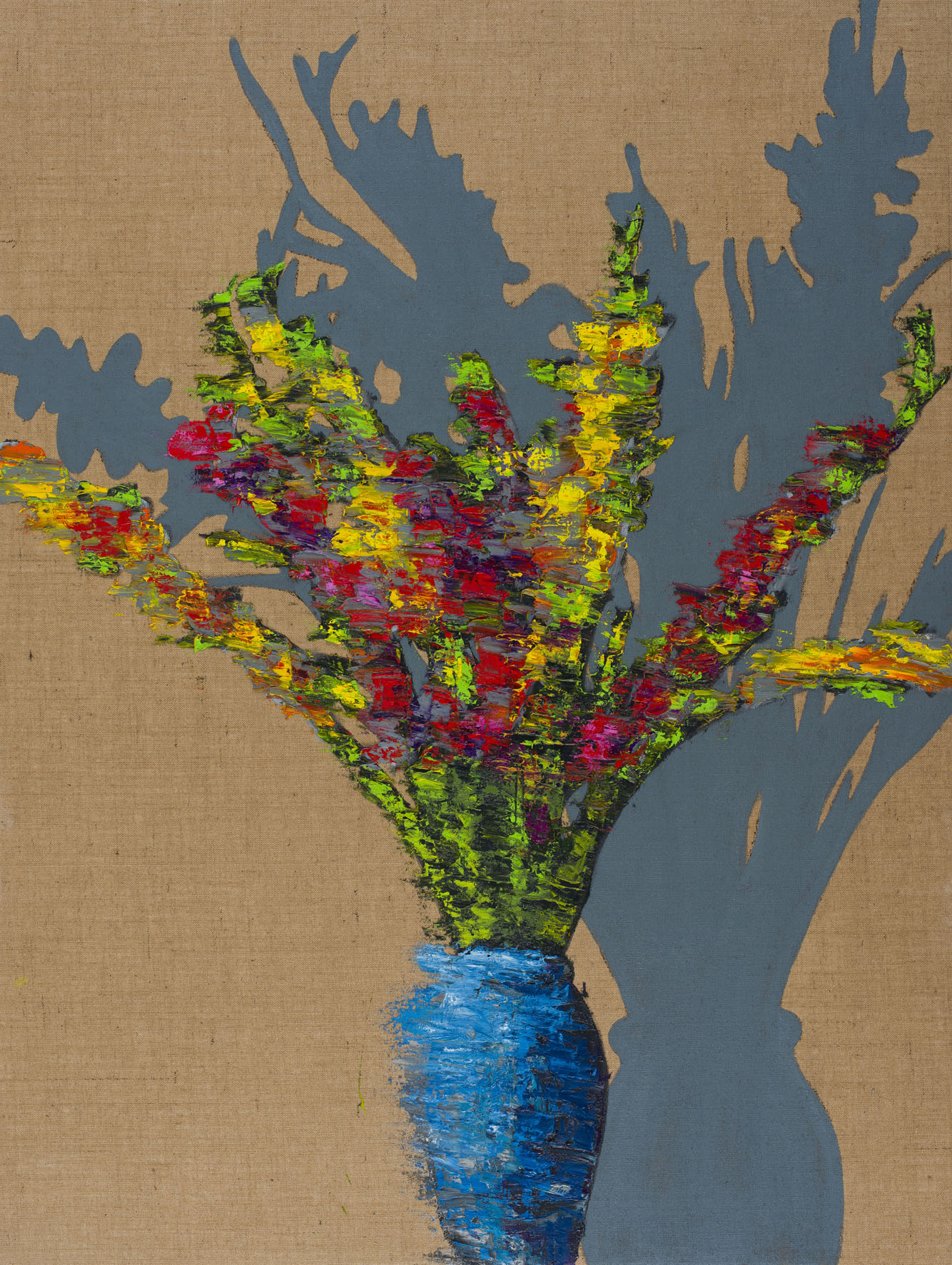HANNU PALOSUO
“Like Tears In Rain”
show pormossa from
Sant’Elia Foundation
under the patronage of
Finnish Embassy in Rome
edited by
Mark again
Palazzo Sant’Elia – Palermo
Opening 18 September 2013
until October 20, 2013
And move Palosuo’s latest paintings which present images in which people, chandeliers and flowers mix in a dense forest of symbols and in which different meanings and references slide together with a sort of indistinct logic, like in a dream. Indistinct in the sense that events and things are clear but their relationships require interpretation.
In dreams past and future, reality and desire and other opposing moods are linked together in a fluid and direct way. In dreams the complexity of the world is revealed. In this sense sleep is a cousin of Craft as they both share a complexity and multiplicity of meanings. If in the canvases the vanishing of the subject takes place through a real physical action of the artist which ends in the moment of the realization of the painting, in the sculptures, on the contrary, the vanishing of the subject is entrusted to the natural erosion of the material used over time, starting the process of subtraction from the real image starting from the technical completion of the work itself.
If in the past Palosuo mainly favored pastel colors in his works, now his palette has revived, at least temporarily. Pastels create a sheltered mood; a breath of charming sensitivity, or an intense scent of lilies seems to pervade the air. In Palosuo’s works beauty is extortionate as their spirit is often linked to a sort of advice. They seem to say, “Look again, observe, and think again.” Palosuo continues to work in ways in which serialization plays a key role. In the series of him creates stories and allusions to different cultural meanings. Even the images of the works form an interesting stratified universe full of references. Hannu Palosuo’s latest works are in line with his earlier output in that they depend on charm and, simultaneously and distinctly, from the horror of beauty. Compared to previous works, the artist has moved towards even freer meanings by using multi-directional symbols such as chandeliers and flowers. These paintings are more closely related to the Western art history tradition and contain little or no reference to the new Nordic or Finnish cultures. They do not deny the artist’s origins but function as successful paradoxes, almost like empty canvases onto which the observer can project his own meanings. Transparency is, however, only the second half of the paradox. The works are full of references, but they are also deserted halls of mirrors, tempting us to take part in secret rituals and encounters Compared to previous works, the artist has moved towards even freer meanings by using multi-directional symbols such as chandeliers and flowers. These paintings are more closely related to the Western art history tradition and contain little or no reference to the new Nordic or Finnish cultures. They do not deny the artist’s origins but function as successful paradoxes, almost like empty canvases onto which the observer can project his own meanings. Transparency is, however, only the second half of the paradox. The works are full of references, but they are also deserted halls of mirrors, tempting us to take part in secret rituals and encounters Compared to previous works, the artist has moved towards even freer meanings by using multi-directional symbols such as chandeliers and flowers. These paintings are more closely related to the Western art history tradition and contain little or no reference to the new Nordic or Finnish cultures. They do not deny the artist’s origins but function as successful paradoxes, almost like empty canvases onto which the observer can project his own meanings. Transparency is, however, only the second half of the paradox. The works are full of references, but they are also deserted halls of mirrors, tempting us to take part in secret rituals and encounters These paintings are more closely related to the Western art history tradition and contain little or no reference to the new Nordic or Finnish cultures. They do not deny the artist’s origins but function as successful paradoxes, almost like empty canvases onto which the observer can project his own meanings. Transparency is, however, only the second half of the paradox. The works are full of references, but they are also deserted halls of mirrors, tempting us to take part in secret rituals and encounters These paintings are more closely related to the Western art history tradition and contain little or no reference to the new Nordic or Finnish cultures. They do not deny the artist’s origins but function as successful paradoxes, almost like empty canvases onto which the observer can project his own meanings. Transparency is, however, only the second half of the paradox. The works are full of references, but they are also deserted halls of mirrors, tempting us to take part in secret rituals and encounters only the second half of the paradox. The works are full of references, but they are also deserted halls of mirrors, tempting us to take part in secret rituals and encounters only the second half of the paradox. The works are full of references, but they are also deserted halls of mirrors, tempting us to take part in secret rituals
Info
Martedì – Domenica dalle 9.30 alle 13.30 e dalle 16.00 alle 19.30
Fondazione Sant’Elia, tel. 0916628289 – Via Maqueda,81 – 90133 Palermo
Ticket €3,00
